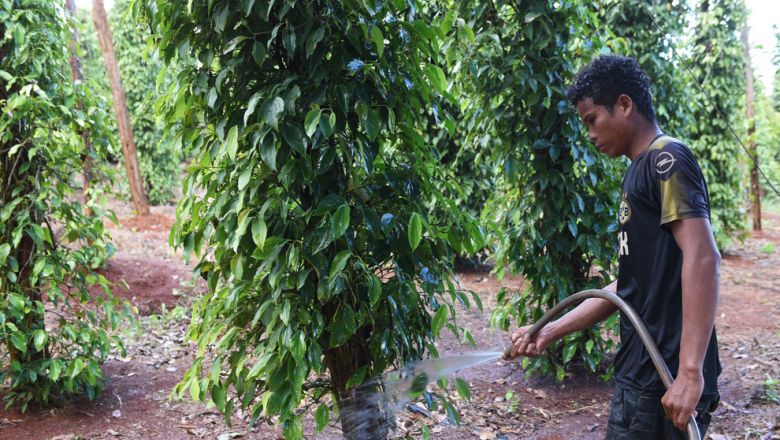
Cambodia exported 3,834.67 tonnes of peppercorns in the first four months of 2022, marking an uptick of 79.03 per cent year-on-year as industry insiders fret about production numbers due to unseasonal rains with gusty winds.
Vietnam was the biggest buyer of Cambodian peppercorn in January-April, at 3,540.01 tonnes or 92.32 per cent, followed by Germany (255.60 tonnes), Malaysia (13.64 tonnes), Belgium (8.80 tonnes), France (8.61 tonnes), the Czech Republic (2.30 tonnes), Japan (2.01 tonnes), Canada (one tonne), the US (0.92 tonne), the UK (0.90 tonne), Sweden (0.49 tonne), Kazakhstan (0.29 tonne) and Australia (0.10 tonne), the Ministry of Agriculture, Forestry and Fisheries reported.
Each year, the pepper fruit is harvested exclusively by hand between January and May, generally until the southwest monsoon brings the rainy season from mid-May.
Cambodian Pepper and Spices Federation (CPSF) president Mak Ny told The Post on May 22 that farmers in some areas had yet to complete their harvests, which have been plagued by a combination of heavy rains and labour shortages.
During the peak harvest season, the price of peppercorn dropped to an average of 13,000 riel ($3.20) per kilogramme, from 16,000 riel in January, he said, adding that output year-to-date has reached 60-70 per cent of the “more than 20,000 tonnes” typically recorded each year.
“Vietnam is a primary buyer of Cambodia’s. Exports to this country by and large pose no major headaches, save for the fact that Vietnam lowers the price for our pepper a bit seeing that our farmers are rushing to harvest.
“Today we are banding farmers together and looking for exporters to buy pepper directly from us, without having to rely on Vietnamese traders,” Ny said.
Kampot Pepper Promotion Association (KPPA) president Nguon Lay said that Kampot pepper – the most highly-prized cultivar, grown in the namesake coastal province – is still being harvested, and that exports have just passed 10 per cent of the total annual amount of about 120 tonnes.
For full article, please read here
Author: Hom Phanet
Source: The Phnom Penh Post
Publication date: 22 May 2022